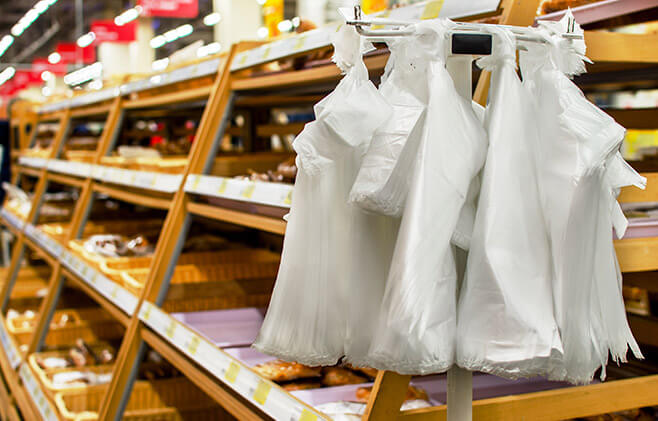
17 Aug The Life of a Single-Use Plastic Bag
If my single-use plastic bag could talk, it would probably say this. Should we be worried about its existence? Is there another pandemic on the rise?
The answer is a resounding ‘yes’! It is a pandemic of sorts. And, ‘yes!’ we should be worried. The enemy, this time, has been around for many decades. Created to fix a supposed problem, the humble single-use plastic bag has taken the world by storm, spreading in pandemic proportions globally, leaving devastation in its wake.
Five trillion plastic bags are produced globally every year. That’s a 5 with 12 zeros after it: 5,000,000,000,000. Everyone has that spot in their home where they keep them. My spot is under my kitchen sink. I pulled one out to inspect it and it got me thinking about its life span.

Plastic Beginnings
My little plastic bag started its life like all other plastics: as crude oil. In fact, so many carrier bags are needed that 0.2% of all the oil in the world is used every year to make them. This equates to 60 million barrels of oil, costing around USD 4 billion.
The Birth of the Plastic Bag
My bag was transformed from its raw oil state to HDPE – shorthand for High-Density Polyethylene. It is light, durable, and rigid. To get to HDPE, the petroleum from the crude oil is heated, producing ethylene gas. This is then converted to a porridge-like consistency called polyethylene. The baby porridge mixture goes through some sort of giant sieve to make spaghetti-like strings which are then chopped into granules. These granules are melted, stretched, then cooled. Finally, my plastic bag is born!
Where Do Babies Come From?
My bag probably started its life in Asia. Most bags come from India, China, Malaysia, and Thailand. They even dye the bags in different colours as HDPE is transparent in its unused state. They are then shipped for use around the world.
Flying the Nest and Finding a New Home
When I first held the plastic bag that’s now under my kitchen sink, I imagined it had to travel around 8,000 miles to reach me. Retailers opt for plastic as it gives them more bang for their buck. They can get more for less and they are easier to store. Two pallets can take around 150,000 bags. If the bags were paper, they’d need their own 40-foot truck!

The Working Life of a Plastic Bag
On average, each person globally is handed 307 single-use plastic bags a year. In the UAE, 11 billion are used annually, with an average of 1,184 plastic bags per person. The average working life of one bag is about 20 minutes.
Retirement
When a plastic bag reaches its retirement stage and has served its purpose in life, it is simply dumped. Around one in three people use plastic bags as bin liners and two in three reuse them in future shopping trips. However, even if your plastic bag is pulled out of its retirement home under the sink, 98% still end up in a landfill site eventually. Hundreds of millions spend their retirement littering the countryside.
Death and Decay
No one really knows how long plastic bags live. The very first ones were born in the 1930s and are still around. Scientists have estimated that they may take somewhere between 400 and 1,000 years to disappear.

Reincarnation
It is estimated that only around 5% of people recycle plastic bags. Many of these end up being shipped back to their motherland where they are shredded and melted and eventually made into other plastic bags.
A New Future
What is certain is that we cannot continue to tolerate this kind of plastic lifestyle. Imagine if you were produced solely to fulfill a 20-minute-long life purpose then eventually dumped in the countryside for hundreds of years, harming marine and land animals in the process. Don’t you think it’s time we do something about this?

